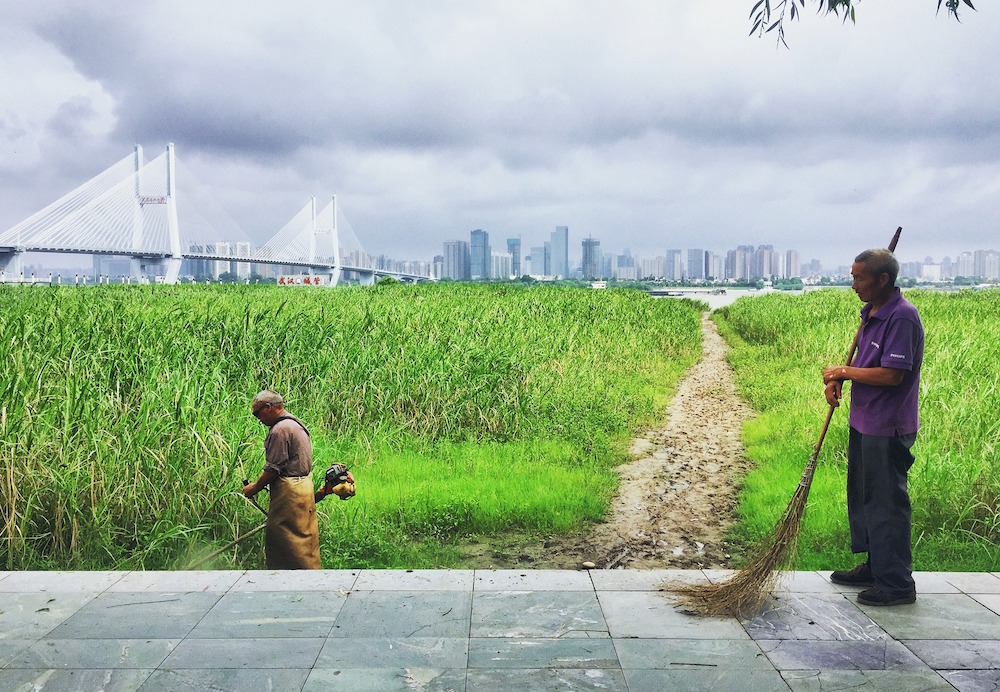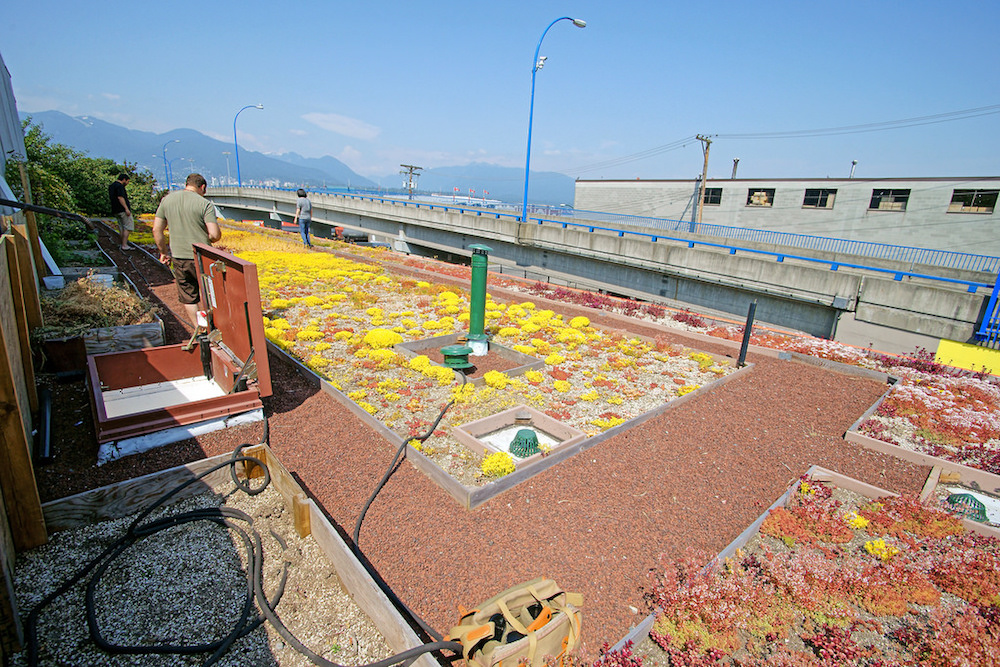Envisioning climate-friendly cities
Learn more about Future Earth's involvement in the CitiesIPCC conference here.
Science fiction has long tried to imagine what the cities of the future might look like – from the flying cars and neon lights of the 1985 film Blade Runner to the post-apocalyptic settlements seen in the Mad Max series.
Now, researchers are making a similar push to envision what cities could look like decades from now. Their goal isn’t to tell a good story, but to understand how the world’s metropolises and towns can help, or hurt, efforts to meet the Paris Agreement. Through this international push, nearly 200 nations have pledged to limit the rise of global temperatures from climate change to 2 degrees Celsius, and to work toward the more ambitious target of 1.5 degrees Celsius.
The challenge is to grasp how cities, which are home to more than half of the world’s people and counting, can transform in ways that preserve natural biodiversity – and foster the health and wellbeing of human populations at the same time. It’s a question that will be front and centre at this week’s Cities and Climate Change Science Conference (CitiesIPCC). This international meeting, which begins today in Edmonton, Canada, will bring together leading thinkers in urban research, planning and more.
To mark the event, Future Earth has asked members of the Urban Knowledge-Action Network to take a page from science fiction and imagine what the cities of the future might look like. How might infrastructure, policy and human behaviour evolve if the world is to meet the 1.5 degrees Celsius target – and how can present-day cities begin that journey now?
Seth Schultz is director of science and innovation at C40:
Cities are all about people and efficiency. People congregate in cities for community, art, jobs, innovation and the ability to more readily access these things. Cities of the future, particularly ones that are carbon neutral within the next 30 years, are going to be those that maximise efficiency and are built around the human experience. The last hundred years have promulgated city development and growth built around personal vehicles and cheap fossil fuels. This has led to sprawl, air pollution and cities cut-off from themselves because they were built to move cars around instead of people.
Cities of the future will be built in a more compact, connected and coordinated way. They will prioritise non-motorised transportation, and they will design the street level for human interaction and engagement. Vehicles will be electric, shared and autonomous. Mass transit will be readily available, clean and located in ways that help move people in an equitable fashion using integrated land use planning as the norm.
Infrastructure will serve dual purposes, such as parks that provide recreational activity, canopy cover to combat urban heat-island effect, foliage to help absorb carbon and scrub particulates out of the air, while also reducing storm water runoff and will act as rain water collection systems with underground storage tanks.
The great news is that, in many cities around the world, this is already happening. But they need access to more financing and need to update their governance structures to engage with science and data in more consistent and meaningful ways, especially if they are to continue transforming at the rate that science, technology and their citizens demand.

Marsh grasses grow along the banks of the Yangtze River near Wuhan, China, one of several cities where the nation is rolling out its "sponge cities" initiative.
Xuemei Bai is a professor at Australian National University in Canberra, Australia:
Incremental changes to our cities are not going to be enough to meet the Paris Agreement target. We must have real transformations that include non-linear changes in mitigation and also involve changes in lifestyle and consumption patterns. Just providing and upgrading infrastructure for growing cities, especially in many developing countries, will take up a big chunk of our remaining carbon budget. This points to the need for a really different approach to climate change and other challenges.
For example, traditional infrastructure in cities works to avoid flooding by collecting and discharging rainwater into a sewer system. That approach is no longer working because heavy rains are becoming more common in many cities, and the infrastructure isn’t able to accommodate that volume.
One response to such a challenge is the concept of a “sponge city,” which some urban areas in China are already starting to implement. The idea is to try to make a city behave like a sponge during heavy rainfall. Such cities absorb some of the rain coming in and delay runoff, which is a major cause of urban flooding. The sponge can be green roofs, an increase in permeable surfaces or green parks.
Timon McPhearson is director of the Urban Systems Lab at The New School in New York:
I think there is a small chance we will manage to keep planetary warming to 1.5 degrees Celsius. It is more likely we’ll be facing a 2 to 3 degrees Celsius world, with challenges that most have not even considered. Still, even if we achieve stabilisation at 1.5 degrees Celsius, we will need to make major transformations in all sectors of society and all areas of the world to deal with the instability of climate, fast-changing weather patterns, intense coastal storms, possible catastrophic sea-level rise and heat waves that could cripple energy and health systems.
Our coastal cities are going to have to learn how to retreat from the most vulnerable coastal areas where regular flooding is inevitable, giving up the scenic views. These cities will also have to build sea walls to limit storm surge impacts, likely around very large regions, to allow for coastal cities to remain in place. This means there could be sea walls wrapping the edges of continents, for example from Florida to Maine in the United States. Any sea wall is bound to fail eventually if a large enough storm event occurs, so we have to combine these adaptive technologies with a change in how we develop and build coastal cities to live with water, allowing it, at least in some proportion, to flow through the city.

Workers tend to a green roof in Vancouver, Canada. Photo: Eclipse Awards via Flickr
This forces us to go beyond grey infrastructure to aggressively take up green and blue infrastructure solutions, adapting and mimicking nature for a flexible and hybrid approach to climate resiliency that can absorb flood waters.
These approaches are not just for coastal cities. More severe and longer-lasting heat waves will challenge virtually every city on Earth. The simplest way to handle this is to retrofit and redesign our cities to be green in ways we’ve only started to imagine. Green roofs, green walls, green road ways, literally wrapping and embedding nature into our architecture, could fundamentally shift the temperature envelope of cities, decreasing heat overall but also reducing risk to the worst impacts of heat waves. But without transformations in social equity and justice, we won’t lower risks from climate change. Social transformation to address structural racism and the underlying drivers of why low-income and minority populations are always the most affected by climate change-driven extreme events is even more important to improving urban sustainability than the infrastructure investments.
Patricia Romero-Lankao is a Senior Scientist at the U.S. National Center for Atmospheric Research in Boulder, USA:
Any future world where humanity manages to limit average increases in global temperature to 1.5 degrees Celsius would necessarily include cities that achieve a dynamic balance between people and nature. The difficultly comes not in imagining that such cities would have affordable and climate-proofed houses, highly-efficient mass transportation systems and circular economies that limit waste, energised by renewables. These cities would be vibrant, safe and just, and protect the ecosystems on which they depend.
Harder to imagine is just how the cities of today would arrive at such a state. To do so would require something more than a great technical leap forward. It would require a social leap to city-specific social contracts balancing private, state and civil societal interests. Corporations, driven by the profit motive, would be held in check by the State, and the State held accountable by civil society. In dynamic balance, these three forces would protect both the public and environmental good, which become inseparable, managing tradeoffs between the Earth’s constraints and community needs.
DATE
March 5, 2018AUTHOR
Future Earth Staff MemberSHARE WITH YOUR NETWORK
RELATED POSTS
Spotlight on LMICs – Tired of Breathing in Pollutants? Time for Better Fuel Economy and Vehicle Standards
Future Earth Taipei Holds 2024 Annual Symposium
Spotlight on LMICs – The Future’s Juggernaut: Positioning Research as Anchors for Environmental Health